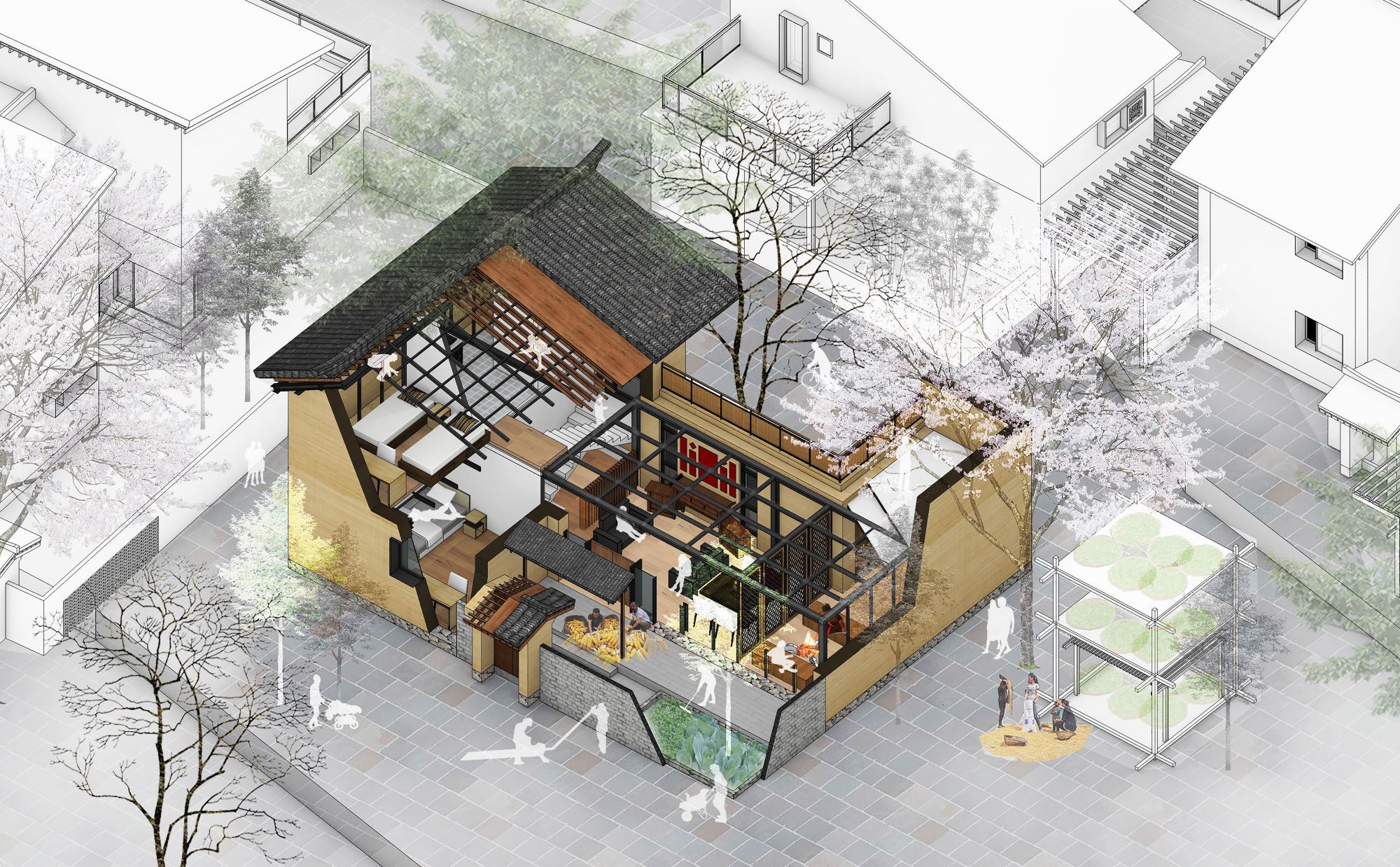Abstract: There are many traditional settlements in the Yi Autonomous Prefecture of Chuxiong, Yunnan Province, China. With the decline of traditional industries and the serious loss of population, ethnic villages are rapidly hollowing out, and the value of villages as living communities has been gradually weakened. This paper aims to cognize the interactive relationship between shared space and living forms at all levels in traditional Yi settlements, and to activate the shared space through the strategy of “scenes reconstruction.” This paper first analyzes Yi settlements from the aspects of “collective life and ritual scenes,” “livelihood mode and production scenes,” and “residential units and living scenes.” It then proposes specific strategies, including spatial scene design strategies at the village level, group level, and household level, as well as the “mother tongue construction” strategy in the construction process. This study expects to make proposals for rural revitalization and the continuation of collective memory in ethnic villages.
.jpg)
.jpg)
.jpg)
.jpg)
.jpg)
.jpg)
.jpg)

.jpg)




 loading......
loading......